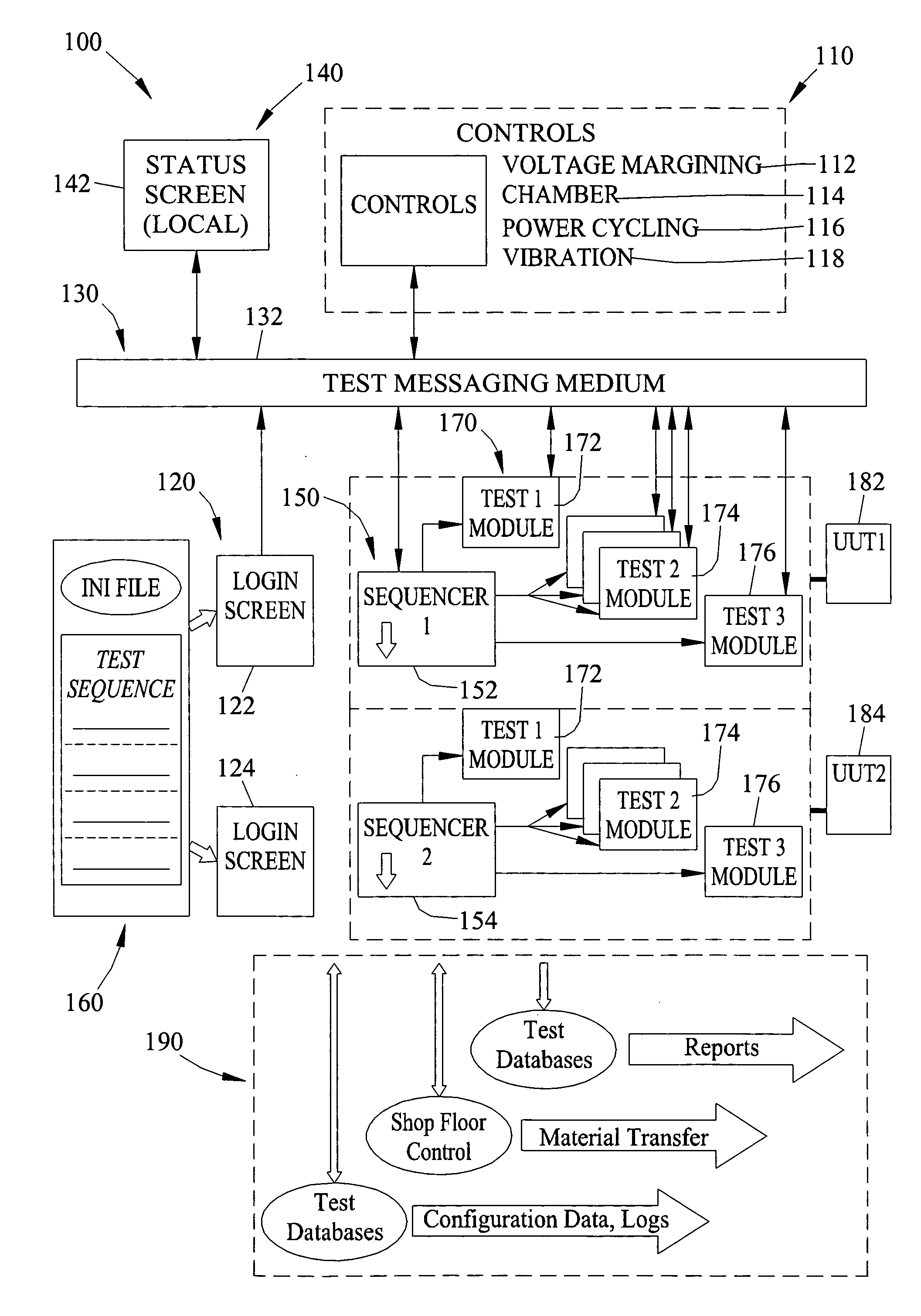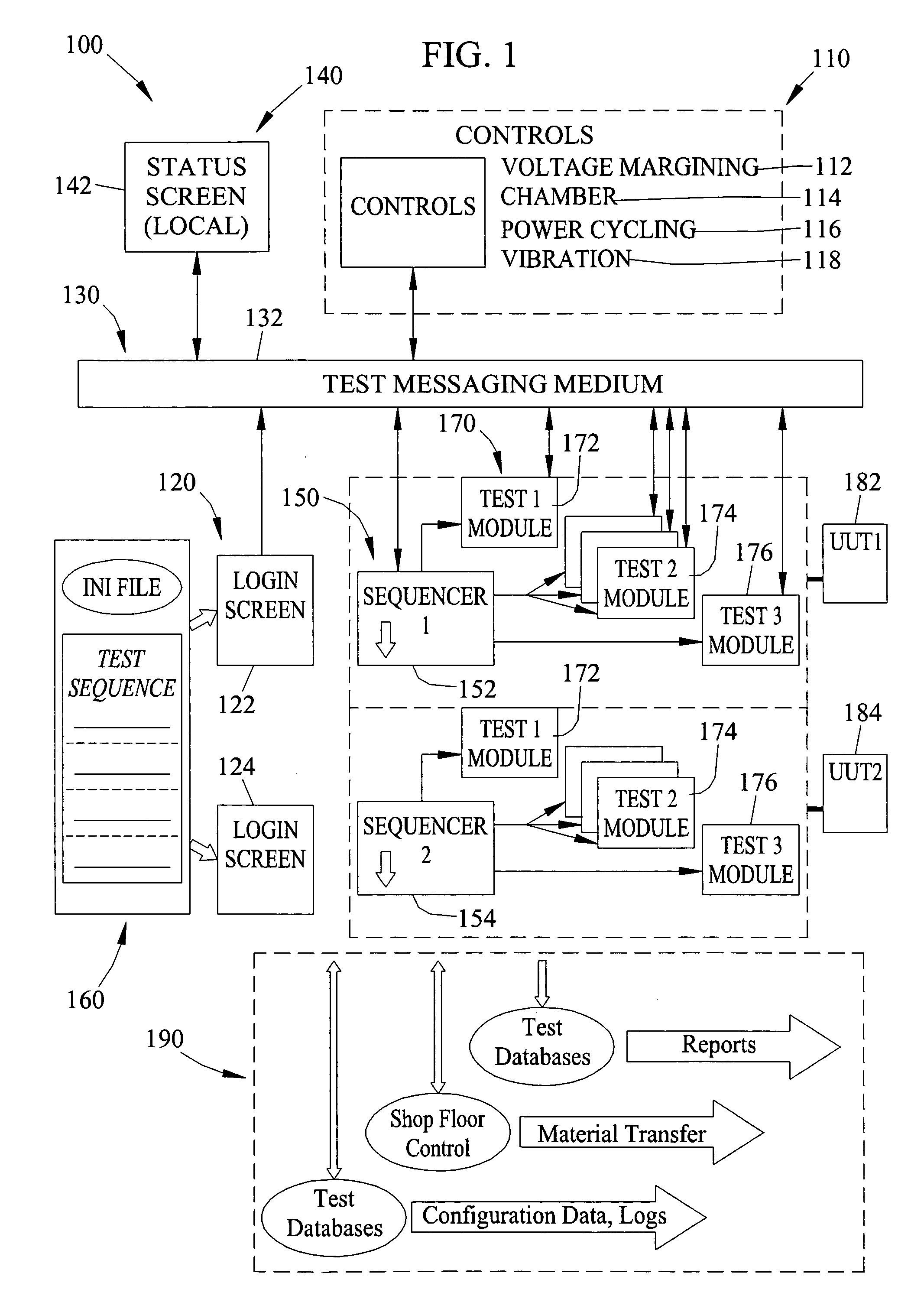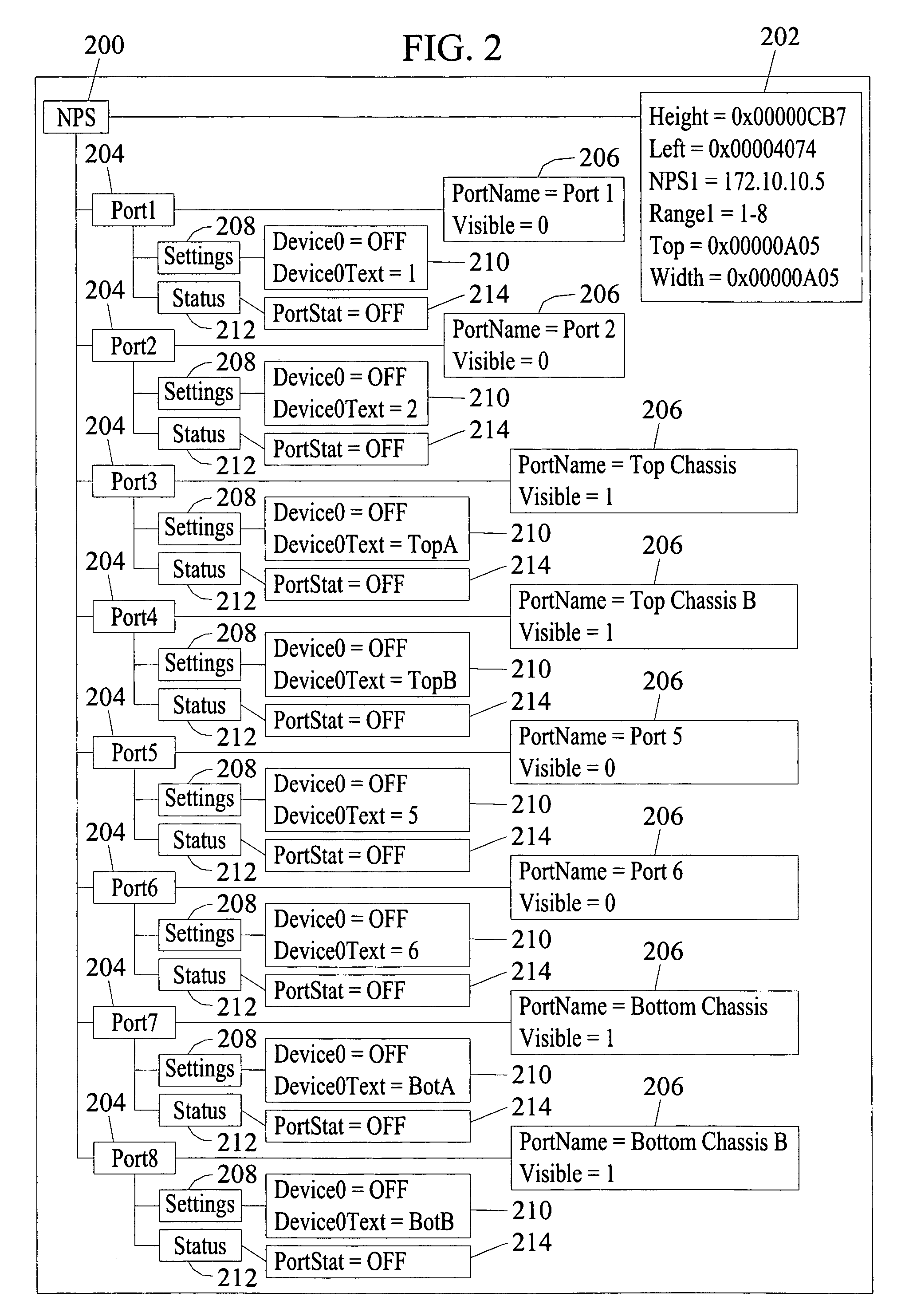Area-and product-independent test automation system and method for automatically synchronizing tests of multiple devices
a test automation and product-dependent technology, applied in the field of product testing, can solve the problems of numerous problems still exist in the testing environment of electronic components, the complex nature of electronic components, and the occasional manufacturing defects and failures of electronic components,
- Summary
- Abstract
- Description
- Claims
- Application Information
AI Technical Summary
Benefits of technology
Problems solved by technology
Method used
Image
Examples
Embodiment Construction
[0029] Area- and device-independent test automation systems and methods for automatically synchronizing testing of a plurality of electronic units under test (UUTs) in a shared testing environment are disclosed. The systems and methods utilize reusable modules that can be shared between multiple test areas and products and generic modules that support common hardware interfaces, such as RS-232, LAN, etc. Examples of re-usable modules are modules that create valid registry structures usable by hardware-specific controls. The systems and methods support the testing of multiple UUTs, including printed circuit boards, computer systems, and the like, that are undergoing environmental testing, such as tests related to vibration, voltage margining, temperature, and power cycling, so as to expedite failure occurrences during production testing of electronic components or as a way to isolate a given failure that has occurred to an electronic component.
[0030] The systems and methods will be ...
PUM
 Login to View More
Login to View More Abstract
Description
Claims
Application Information
 Login to View More
Login to View More - R&D
- Intellectual Property
- Life Sciences
- Materials
- Tech Scout
- Unparalleled Data Quality
- Higher Quality Content
- 60% Fewer Hallucinations
Browse by: Latest US Patents, China's latest patents, Technical Efficacy Thesaurus, Application Domain, Technology Topic, Popular Technical Reports.
© 2025 PatSnap. All rights reserved.Legal|Privacy policy|Modern Slavery Act Transparency Statement|Sitemap|About US| Contact US: help@patsnap.com



